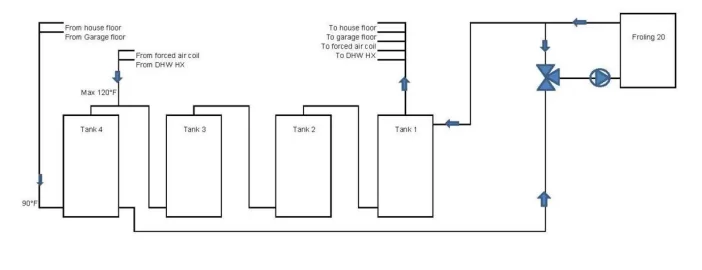My Froling 20 installation includes a 0-10volt mixing valve to control the water temperature entering the boiler. The valve is controlled using a Vesta controller which provides the required 0-10v signal to modulate the valve to maintain the return water setpoint. The setpoint is varied to provide normal or extended burn times. The boiler controls when the boiler circ pump starts and stops.
I use an Erie valve with a CV of 8.0. This CV was selected since the flow through the boiler is 7 USGPM. This flow rate was selected since a 20°F temperature rise on a boiler output for 70,000 BTH gives 7 GPM.
My 3-way valve is Erie VM3427P33A000, 1" 3-Way NPT Proportional Non-Spring Return Zone Valve, 8 CV (24V) another valve option is Belimo B322B TR24-SR
I use an Erie valve with a CV of 8.0. This CV was selected since the flow through the boiler is 7 USGPM. This flow rate was selected since a 20°F temperature rise on a boiler output for 70,000 BTH gives 7 GPM.
My 3-way valve is Erie VM3427P33A000, 1" 3-Way NPT Proportional Non-Spring Return Zone Valve, 8 CV (24V) another valve option is Belimo B322B TR24-SR



